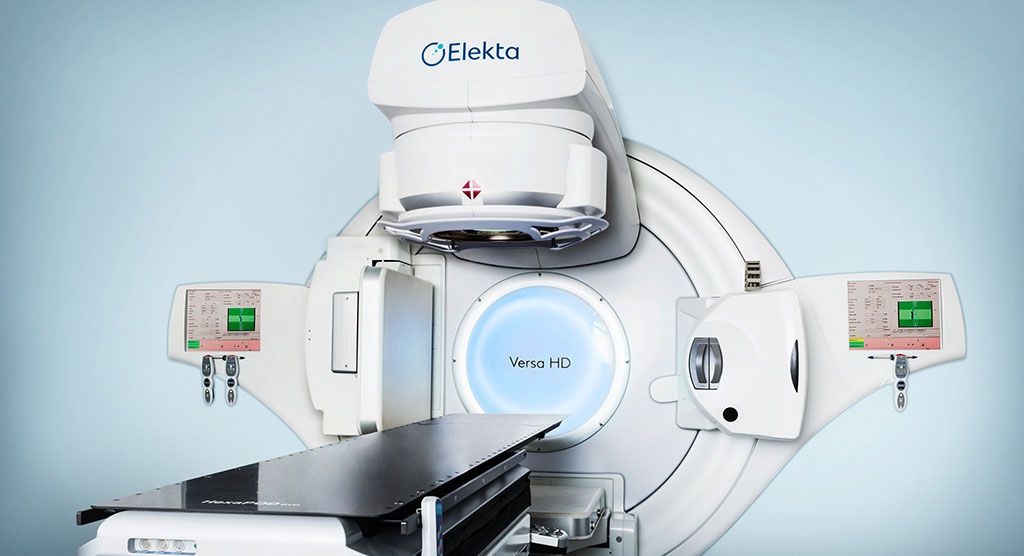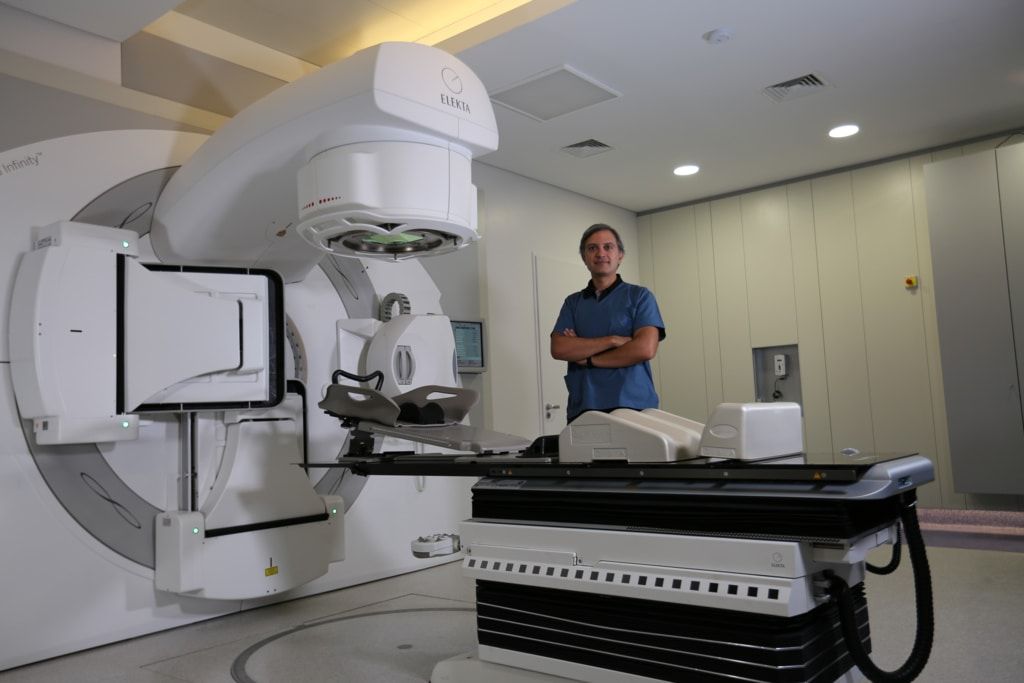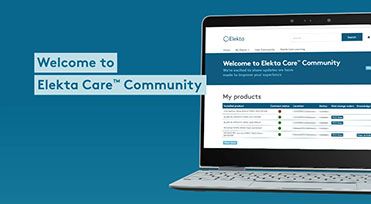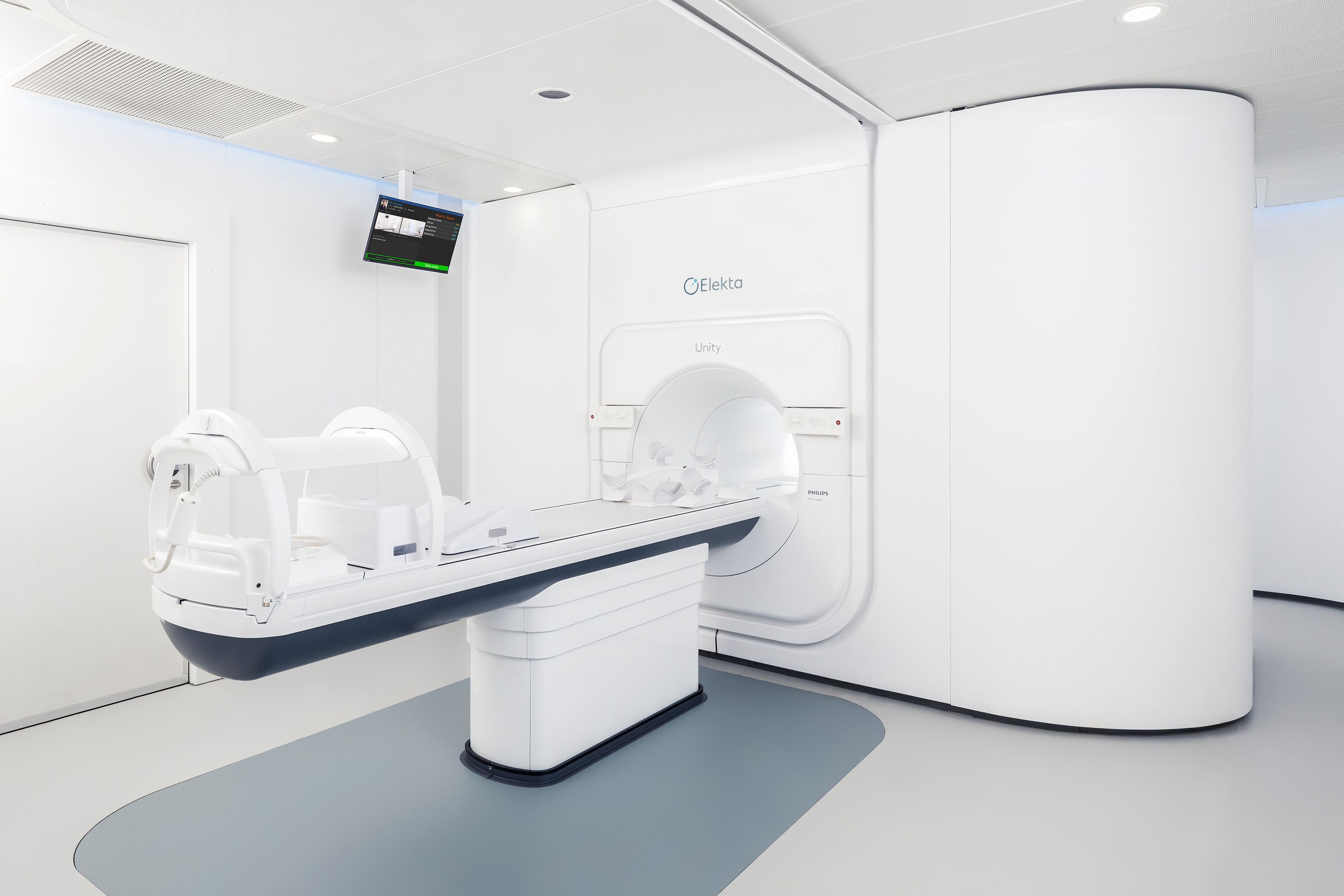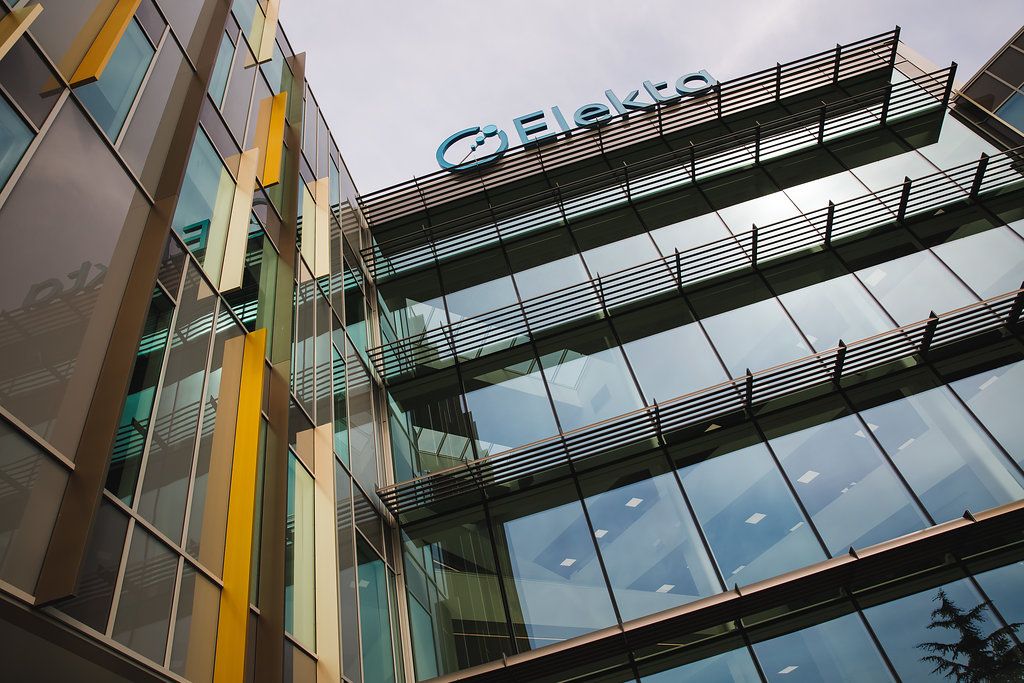Elekta Care Learning Partnerships program focuses on rapid SBRT start-up
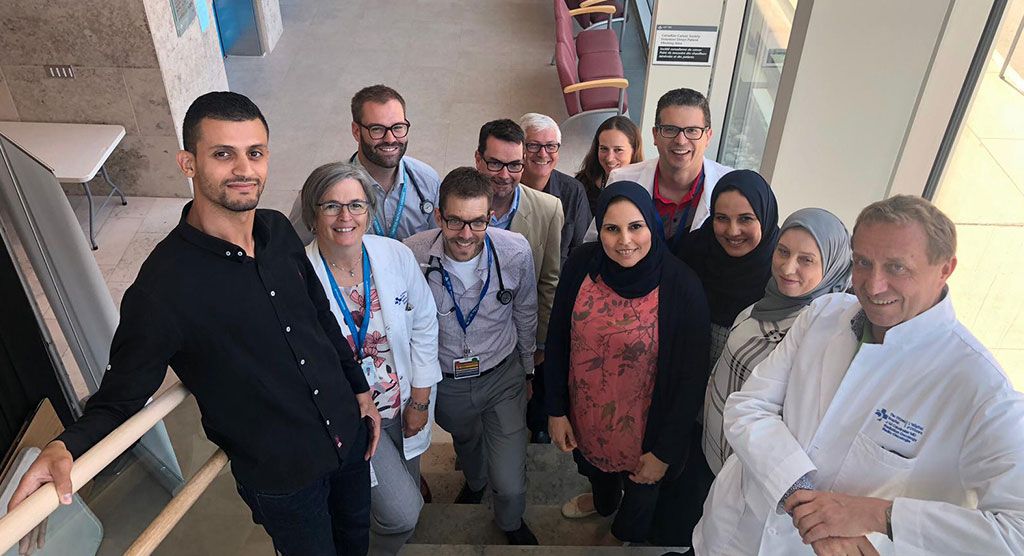
Canada’s The Ottawa Hospital hosts Annaba Centre Hospitalier Universitaire - Centre de Lutte Contre le Cancer clinicians in SBRT immersion program
Algeria’s Ministry of Public Health – recognizing the country’s need for greater access to advanced radiotherapy technology and techniques for cancer patients and the healthcare professionals that treat them – has invested heavily in radiation therapy solutions over the last few years. Annaba’s Centre Hospitalier Universitaire – Centre de Lutte Contre le Cancer (CHU-CLCC) now has a full complement of Elekta equipment, including a Versa HD™ linear accelerator (linac), two Elekta Infinity™ linacs with Agility™ MLCs, MOSAIQ® Oncology Information System and Monaco® treatment planning system.
But adding radiotherapy hardware and software was only part of the government’s goals for Algeria; treatment quality was also paramount as CHU-CLCC physicians strived to implement therapy techniques – from standard 3D conformal radiotherapy and IMRT/VMAT to stereotactic body radiation therapy (SBRT).
“We needed clinical support to reassure ourselves that we would be delivering the highest quality treatments to our patients.”
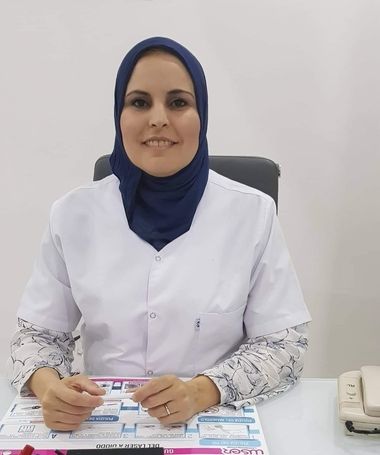
“These innovative techniques are new for us in Algeria and the Annaba center is the first in the country to implement them,” says Lilia Naoun, MD, CHU-CLCC’s Head of Radiotherapy. “But to do so, we needed clinical support to reassure ourselves that we would be delivering the highest quality treatments to our patients. Therefore, in addition to the standard technical training that Elekta provides, the contract between Elekta and the government specifies clinical support to be delivered by other expert centers. That’s where Elekta Care Learning Partnerships comes in [See sidebar Elekta Care Learning Partnerships].”
Previous engagements
While CHU-CLCC’s collaboration with The Ottawa Hospital on SBRT is the Algerian hospital’s most recent experience with Elekta Care Learning Partnerships, this ongoing engagement (June-October 2019) was preceded by two other learning journeys as CHU-CLCC progressively increased their expertise in harnessing radiotherapy techniques.
“We first started with 3D conformal clinical training sessions for anatomy such as the breast with Elekta Care Learning Partner, University Hospital La Timone in Marseilles, France,” Dr. Naoun relates. “This support was initially done by visiting La Timone for 10 days, followed by some WebEx preparation sessions, then by a go-live with the support of La Timone clinicians who came to Annaba.”
A year later, once 3D conformal was fully implemented at CHU-CLCC [50 patients], CHU-CLCC added IMRT/VMAT with the guidance of Elekta Care Learning Partner, Centre Marie Curie in Valencia France. And, with Centre Marie Curie’s ongoing help, CHU-CLCC remains the only site in Algeria performing 4D lung imaging.
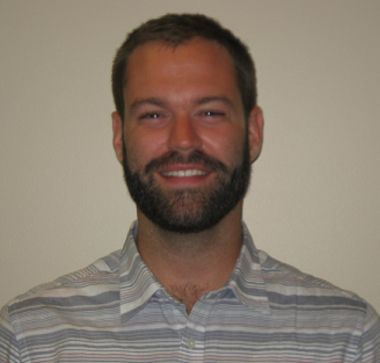
“Now, IMRT and VMAT are well-established techniques and we treat 130 to 140 patients per day on our three linacs,” she notes. “Since the opening day, we’ve treated more than 3,500 patients, which is simply formidable.”
The journey continues at Ottawa
As much as CHU-CLCC’s implementation of IMRT and VMAT was a major milestone, both the hospital and the Algerian government were determined, with Elekta’s help, to elevate the country’s radiotherapy capabilities even higher: the launch of an SBRT program.
To accomplish this mission, CHU-CLCC needed to work with a partner center that not only possessed abundant SBRT experience and expertise, but also one whose professionals could speak French. The Ottawa Hospital (TOH, Ottawa, Ontario, Canada) emerged as the obvious choice, with its nine-year-old SBRT service, Versa HD™ system and other Elekta solutions, and many radiation therapy staff who speak both English and French fluently.
CHU-CLCC would be TOH’s first customer as an Elekta Care Learning Partnerships training partner. According to TOH staff radiation oncologist Jean-Marc Bourque, MD, the hospital’s involvement in the program was born of a desire to share radiotherapy knowledge to underserved regions.
“There is an increased interest in the global oncology community to reduce the disparity of access to radiotherapy techniques and cancer outcomes among patients worldwide.”
“There is an increased interest in the global oncology community to reduce the disparity of access to radiotherapy techniques and cancer outcomes among patients worldwide,” Dr. Bourque says. “As a major regional cancer care provider, TOH is in a position to diffuse our knowledge through the Elekta Care Learning Partnerships and get it to cancer patients worldwide. That means effective therapies are accessible to everyone, not only those who live in Ottawa.”
TOH’s radiotherapy programs are also mature, organized and robust, adds Dr. Bourque’s colleague, Marc Gaudet, MD, TOH radiation oncologist.
“Ottawa brings to the table a culture of standardized care,” he says. “We have very specific care pathways that our physicists and planners have developed over many years and that they regularly update. When you’re building a new program, that level of organization and establishment is what you’re striving for. TOH is very well positioned to help Annaba with that, helping them avoid having to start from scratch.”
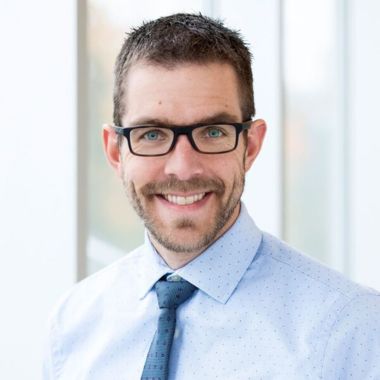
Additional TOH qualifications, according to Dr. Gaudet, are the hospital’s high caseload and diverse, highly skilled professionals.
“We see over 5,000 RT patients a year, of which 10 percent are SBRT patients, and we employ a wide range of techniques,” he says. “Plus, while we are like many centers in terms of the technology we use, they might not necessarily have the human resources to implement those systems in different settings. One of the strengths of Ottawa is that we have many very highly trained individuals here, such that we can address virtually any disease site. Physicians from other clinics have come here for fellowships to learn different disease-specific technologies to implement locally.”
Clinical observation
During June 25-28, staff from CHU-CLCC participated in the first phase of their engagement, Clinical Observation, which included didactic learning, shadowing clinical staff and obtaining guidance on best clinical treatment practices. In the near future, Ottawa and Annaba will schedule WebEx meetings to review the cases/patients CHU-CLCC will identify for its go-live, and review and validate the treatment plans yet to be developed. The first phase and WebEx meetings are designed to prepare both Ottawa and CHU-CLCC for the second phase, Clinical Consultancy. This visit to Annaba by Ottawa team members is scheduled to occur in October, and will entail go-live support, clinical practice validation, patient treatment examples and QA best practices.
It was important prior to the Clinical Observation phase that TOH and Annaba jointly agree on the scope of learning. This was done via WebEx meetings, Dr. Gaudet says.
“Initially, Annaba expressed an interest in covering all intracranial and extracranial SBRT sites, which we decided would be too much to cover in only four days,” he says. “And concentrating on lung SBRT only wouldn’t be practical because – due to later stage lung cancer diagnoses – CHU-CLCC doesn’t get a high number of treatable referrals. We eventually agreed to focus on liver due to Algeria’s much higher incidence of liver malignancies [e.g., HCC] than here, along with some lung, intracranial and spine SBRT, as well as technical aspects of QA and treatment planning.”
Attending the Clinical Observation visit at Ottawa were Dr. Naoun, three of her radiation oncologist colleagues and an Annaba physicist.
“It went really well – we had great collaboration with everyone.”
“While on-site, it was a mix of lectures and explanations, but mostly role-based shadowing of the Ottawa staff in their day-to-day work and observing how they treat patients from consultation to radiation delivery,” she says. “It went really well – we had great collaboration with everyone.”
The didactic presentations that CHU-CLCC received during the visit were high-level discussions on the utility of SBRT, according to Dr. Gaudet.
“We had a session on the whole gamut of SBRT – where it can be applied in 2019 and which patients are ideal candidates for the technique,” he says. “It was relatively basic, but it gave them an idea of where we use SBRT in our clinic. One of our physicists reviewed with the Annaba team some key aspects of SBRT, such as its radiobiological mechanisms, how immobilization is used and how we perform QA and what our QA thresholds are.”
Job shadowing comprised most of the engagement, with hands-on experience on the last day.
“The team members from Annaba were able to watch how our planners generated SBRT plans and the steps the physicists went through in conducting QA.”
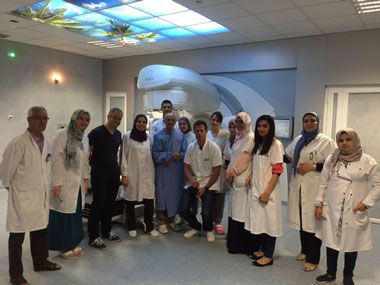
“The team members from Annaba were able to watch how our planners generated SBRT plans and the steps the physicists went through in conducting QA,” Dr. Gaudet says. “We stayed late in the day to actually watch a real-life QA on a machine as well.”
Dr. Naoun adds that the hands-on training was invaluable for her team.
“We were very excited to work on some scans,” she recalls. “These were anatomized scan sets that we used to generate volumes, to get a better feel for the margins to use, the appropriate doses, dose constraints and dose distributions for SBRT and how to account for tumor movement.”
“We were able to not only learn about the use of the Elekta technology and SBRT techniques, but we also gained insight on how to establish an SBRT program.”
“Another important aspect of our visit,” Dr. Naoun continues, “is that we were able to not only learn about the use of the Elekta technology and SBRT techniques, but we also gained insight on how to establish an SBRT program – things to think about concerning patient safety, SBRT service organization, patient selection and caseload. Ottawa had already gone through this process years ago and were very knowledgeable.”
“The CHU-CLCC people were well-read and very keen to learn, Dr. Gaudet adds. “The interactions were excellent. I think it went very well.”
Preparing for go-live
With the Clinical Observation phase complete, CHU-CLCC staff are readying for the next phase, Clinical Consultancy during go-live in January 2020.
“Once we returned to Annaba, we had many meetings in which we reviewed and shared the knowledge we had received, and we also began looking at identifying the most appropriate patients to start our SBRT practice,” Dr. Naoun says.
The importance Dr. Naoun and her colleagues place on their three Elekta Care Learning Partnerships experiences cannot be overstated.
“Our IMRT/VMAT program would have taken more than a year-and-a-half to fully implement without Centre Marie Curie’s help, for example,” she says. “There is another center that opened around the same time as us but with non-Elekta equipment. They had no peer-to-peer clinical education like Elekta provided in their contracts. We can see that they simply didn’t have the confidence to adopt those techniques, because they are only now about to start IMRT/VMAT after three-and-a-half years. I also have to give tremendous credit to the Annaba team. Their efforts and dedication to learning over the past years has been essential to our success.”
“With Elekta Care Learning Partnerships, we found a training partner that was a perfect fit. This is a huge plus and we are truly aware of that”
“The same goes for SBRT as it did for IMRT/VMAT,” she adds. “We would have had to obtain training through the Algerian government or try to find an experienced center by ourselves. With Elekta Care Learning Partnerships, we found a training partner that was a perfect fit. This is a huge plus and we are truly aware of that. We are now eager to share our knowledge with other centers in our country – to help our colleagues in the radiation oncology community, but most importantly to help Algerian patients. Bringing access to a high level of treatment quality to as many cancer patients as possible is what everyone’s goal should be.”
Elekta Care Learning Partnerships enable through learning
Elekta’s growing partner network ensures access to the latest clinical developments, research and best practices worldwide
The more than 50 partners worldwide comprising the Elekta Care Learning Partnerships program have been carefully selected for their clinical experience, technological acumen and willingness to help centers integrate new treatment techniques into their radiotherapy service.
The program is designed to provide knowledge transfer at each customer’s milestone in radiotherapy sophistication, whether the start point is 3D conformal EBRT or the requirement is training in more advanced techniques, such as IMRT/VMAT, SBRT, Gamma Knife radiosurgery and brachytherapy. Expert trainers accelerate time-to-proficiency for improved quality of care, outcomes and patient satisfaction.
Through intensive host-site didactic courses and clinical observation and customer-site clinical consultancy, personnel at an Elekta Care Learning Partnership training institution lead the customer’s staff on an educational journey that culminates in:
- Increased confidence to safely and effectively operate Elekta technology, including all hardware and software
- Acquisition of heightened/expanded clinical capabilities and skills to optimize clinical workflow
- Assimilation of best practices to boost the potential for improved outcomes and minimized risk
An Elekta Care Learning Partnership engagement is methodically planned by the customer and trainer to set learning expectations, gather human and technological resources and establish timelines for go-live.
